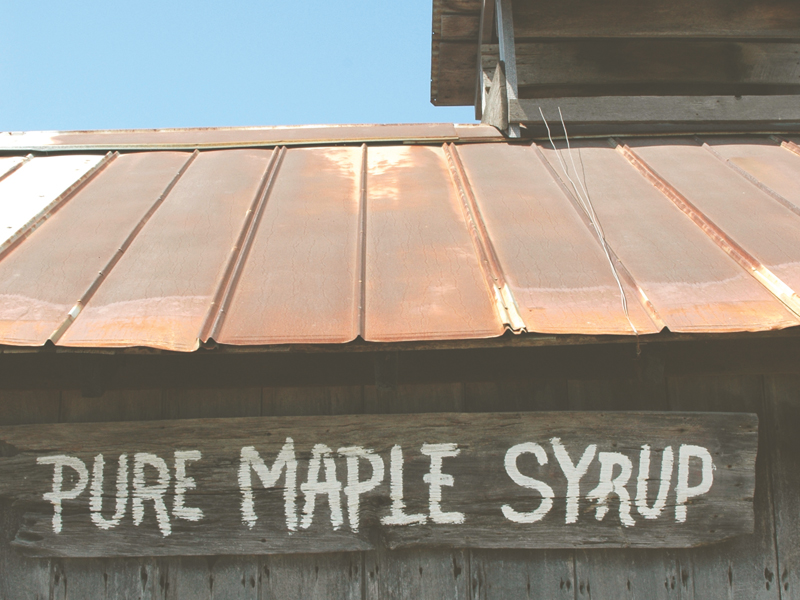In my home, we don’t take maple syrup lightly. And that goes for pouring it on pancakes, French toast and using it to cook with. My husband is from Vermont, which produces twice as much maple syrup as any other state. And as a Canadian, well, I’m pretty darn proud that we are producing more than 80 percent of the world’s maple syrup. Like the leaf on our flag, maple syrup is a symbol of Canada, along with the word “eh?” So, sorry Aunt Jemima, your high fructose corn syrup, water, cellulose gum, caramel color, sodium benzoate and sorbic acid syrup isn’t on our table.
I recall the legend of the discovery of maple syrup told to me during a school field trip to Quebec. While showing my classmates and me how to roll hot maple syrup onto a wooden stick off a bed of snow to create a fresh maple syrup lollipop of sorts, the guide told a tale of an Algonquian chief. While hunting in the woods, the chief’s tomahawk wedged into the trunk of a maple tree. A clear liquid bled from the bark and the chief collected it. His wife used it to boil the venison from the hunt. To her surprise, the clear liquid turned into a thick syrup and that was the beginning.
The third moon of the year is known as the “sugar moon” to First Nations, the native Canadians. When sap from the trees began to flow, families would migrate to the sugar bush to set up wigwams—the original sugar shack. For several days the tribe would tap into maples and collect sap. The First Nations drank the watery sap, which would probably compare to an energy drink today, and coated popcorn—another First Nations discovery—an early version of kettle corn. They also reduced the sap beyond the syrup stage until it crystalized into maple sugar.
Today the process of making maple syrup has been revolutionized with processes such as reverse osmosis, which draws most of the water from the sap before it is boiled. This alone saves manufacturers up to 70 percent in fuel costs of this already very laborious process. V-shaped gashes and metal taps that used to be corkscrewed into the bark have been replaced by plastic tubing allowing for the sap to be vacuumed out, which replaces the romantic sound of steady drips into metal buckets.
In Berryville, Virginia, Joyce and Travis Miller make syrup out of hickory bark they forge in Virginia forests. The owners of Falling Bark Farm—most appropriately named—“wildcraft” their syrup. They harvest, clean and toast the bark to enhance the flavor. It then undergoes an extraction process, is aged and then filtered before minimally refined cane sugar is introduced. What does it taste like? “The taste is somewhat similar to maple in that it is very earthy. Some say ‘smokey’ tasting,” says Miller. “You can use it in all the same applications as you would use maple, only it has no distinct flavor. It is just a different culinary experience. More subtle in flavor— it lends itself to both sweet and savory dishes.” As true syrup die-hards, the Millers make sure they’ve got a bottle handy for those breakfast moments, “[It] just makes for an overall feel-good start to the day.”
For some, the average cost of $70 per gallon for real maple syrup or bark syrup versus $16 a gallon for what French Canadians call sirop de poteau or “telephone pole syrup,” is a hard sell. But bark syrup’s complex flavor along with its healthy proteins, minerals and antioxidants, cannot be imitated.

